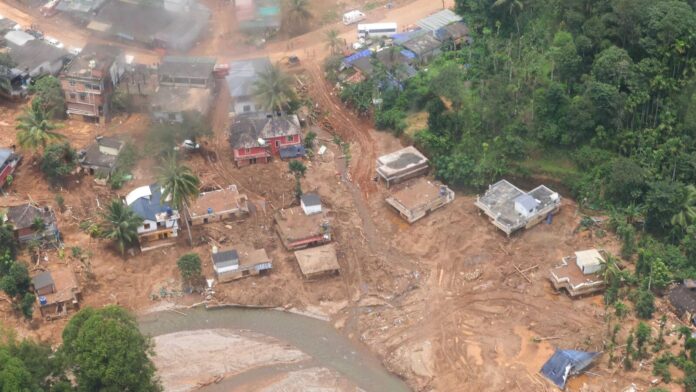An extreme burst of rainfall attributable to globally-induced climate change was the cause, but the impact in terms of lives lost and villages erased was a result of weakening of the topography by predatory construction, mining and quarrying.
Way back in August 2011, a Western Ghats Ecology Expert Panel (WGEEP) chaired by Professor Madhav Gadgil submitted its comprehensive report on the vulnerability of the Western Ghats to encroachment.
The WGEEP classified the Western Ghats into three zones by degree of ecological sensitivity, based on criteria set out in a refereed academic paper in the journal Current Science.
The severest strictures on permissible economic activity were imposed on ecologically sensitive zone one (ESZ1). The assignment of area under each zone was by taluk, the next level below the district in the administrative hierarchy. All three taluks of Wayanad district were in ESZ1.
It follows from this taluk-wise geographical assignment that the six Western Ghat states (Goa, Gujarat, Karnataka, Kerala, Maharashtra and Tamil Nadu) were each treated separately, as the report explicitly says (page 88). That being the case, there was no need for all states to agree unanimously to the restrictive measures proposed.
States could have been left free to opt in fully, or with modifications subject to negotiation with the Union ministry of environment. A final set of notifications could have set out the agreed parameters specific to each state, along with the monitoring mechanism.
Following the WGEEP, another high-level working group (HLWG) was appointed, chaired by space scientist Krishnaswamy Kasturirangan. Its report in April 2013 had a single Ecologically Sensitive Area (ESA) zone covering an area of about 60,000sq-km (half that of the WGEEP), by demarcating areas within taluks rather than taluks as a whole.
Half of Wayanad falls in their single ESA category. The HLWG recommendations are not notified either, although several draft notifications have been in circulation.
Cascading committees are a common practice in the Indian policy space. The subject of petroleum pricing holds the record, with several committees having been appointed over the years.
Each committee might have had different membership, but the secretariat serving them was often the same. In one such case, the official charged with drafting the report comically bemoaned to me that he found it difficult to differ from the previous report since he was the one who had written it.
Is it really necessary for the government of the day to appoint another committee to modify the recommendations of a prior committee? Not at all. Parliament has 16 Lok Sabha departmental standing committees and eight in the Rajya Sabha, with membership drawn from all parties.
One of the Rajya Sabha committees covers science, technology, environment, forests and climate change (too wide a remit; it should be split into two).
These committees are well positioned to assess the report of an external panel in a non-partisan way. They have seriously declined in importance over the years because all governments, irrespective of party affiliation, find it easier to outsource the task of modifying a politically difficult set of recommendations, thereby shifting responsibility to another set of professionals.
In the WGEEP report, the activity restrictions in ESZ1 as listed in Table 6 of the report include construction, mining and quarrying. Since these activities are not presently restricted, it is possible today to obtain legal permits to engage in them in ESZ1 taluks.
Despite that, these activities are still carried out illegally to evade royalty and other payments. The final outcome in terms of the extent of illegal activity is a function of a number of forces, of which key elements are the probability of detection and the penalty imposed.
The mystery is why, neither in the Western Ghats nor in the Himalayan states, there is no people’s movement against this kind of predatory activity, legal or not, which risks their lives.
Short-term job opportunities, in the absence of other alternatives, seem to prevail over the (still low but rising) risk of extinction. This is where the panchayat level of governance could have mapped out alternative medium-term avenues to jobs and livelihoods, and, at the very least, acted as watchdogs over illegal activity.
In Kerala, panchayats are well funded by the state government, but the influx of funding from above has made them cut back on their own tax efforts (my joint paper, EPW, 12 August 2000), and essentially led to a surrender of autonomy to the state government. The state push to develop tourism in Kerala (‘God’s own country’) has handed over scenic districts like Wayanad to the devil.
That is why a commitment between the Union government and the state, on the protection and monitoring of ecologically sensitive areas within their respective jurisdictions, is so vital.
Just as climate change mitigation can only be tackled internationally between countries in a spirit of mutual cooperation, states in India have to be persuaded to subordinate short-term interests to the longer-run imperative of sustainability.
#Wayanad #landslide #holds #lessons #governance #fragile #zones
